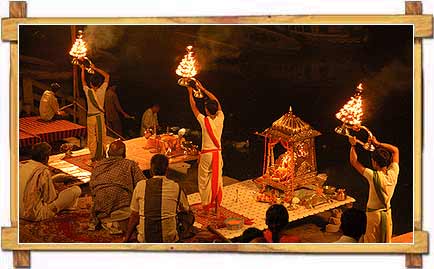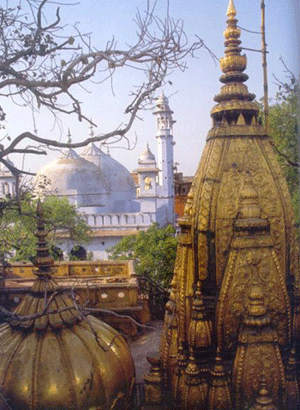It is a popular saying that if you were to sum up the essence of the way of life in Varanasi in three simple words, all you have to say is, 'Ganga,Bholenath and Paan'.In Varanasi, these three words virtually signify, the three pillars of life.Ganga, the river is revered as the the mother goddess, Bholenath, another name for Lord Shiva, is the supreme deity of Varanasi,and the Paan is the humble betel leaf that is proudly chewed upon by the true Banarasi.The word 'Banarasi' is generally used to refer to anyone or anything that has its origins in Banaras or Varanasi.So when the Paan of this area became famous all over the country for its unique flavor, the name "Banarasi Paan" stuck on and over the centuries, the banarasi paan has achieved an iconic following all over the country.
For those who come from countries where chewing of betel leaf is not a tradition, the ubiquitous red stains that are to be found everywhere in Varanasi is an incredibly harrowing experience. I have seen foreigners in Varanasi shocked, bewildered and horrified by the sight of men suddenly spitting out red coloured sprays from their oral cavities and then move on, leaving the poor guy wondering if that was blood or something else.An unsavory sight you would say.Nevertheless, this is a sight that is the second most common experience in Varanasi, the first one would be of course the sight of men.Yes, almost every one in Varanasi chews Paan.
There is a Paan shop after every 50 meters in Varanasi where one can buy Paan for as little as 1 rupee. Some special varieties of Paan may cost up to 10 rupees too. The shopkeepers who run these Paan shops are called 'Paanwallahs' and each 'Paanwallah' has his own style of preparing the Paan. The general method though includes dipping the betel or the paan leaf in water, then smearing the leaf with small doses of chuna(lime), Kattha(Acacia Catechu), Supari(betel nut), Saunph(Fennel), surti(ground tobacco leaves), Zarda(a type of flavored tobacco) and then finally, the leaf is delicately folded in to tringular shape and graciously handed over to the buyer who would then in an equally graceful movement of hand, put the folded paan in to his mouth and then slowly dig his teeth , crushing the paan to reach the mixture inside, letting his oral juices intermingle freely with the components of the Paan and then wait for that sensory confirmation from his taste buds to tell him that all is well and the Paan was perfect. Satisfied, he would dig in to his pockets to pull out the well deserved one rupee coin and hand it over to the Paanwallah,in the process also praising him for a job well done before moving on.This is a ritual that you can witness every minute if you were to stand by one of the Paan shops in the city.
The Paan and its components after mixing with the oral juices take on a dark red colour which leaves a red stain wherever it is spit.Fact is, the concoction that forms up in the mouth after chewing paan is not swallowed, rather it is spit out after savoring it for some time. Nobody minds the paan spitting in Varanasi though. The tradition is so intricately woven in to the fabric of life of a Banarasi that it never occurs to anyone that others may find it filthy.For the average Banarsi, eating paan is as much a part of life as drinking water or eating food.
The tradition of chewing Paan is to be seen all over India and the Paan was used by Indians as early as 2600 BC. The Paan is also used in sacred rituals and is offered to guests during important family functions too.
In Varanasi though the chewing of Paan is not just an occasional indulgence, it is a way of life. And it is likely to remain so for times to come.
Subscribe to:
Post Comments (Atom)














http://peopleoftheoneworld.blogspot.com/2010/03/lifedeath-and-money.html
ReplyDeleteIt really helpful for the users of seo or marketing. Thanks for sharing this list.
ReplyDeletehttps://www.bharattaxi.com
There is no Doubt that there is nothing like Banarasi paan in the whole world.
ReplyDelete